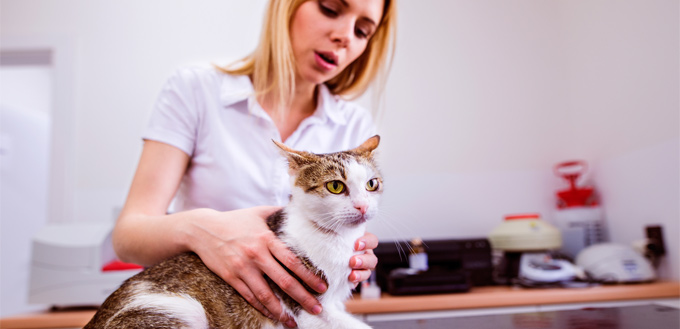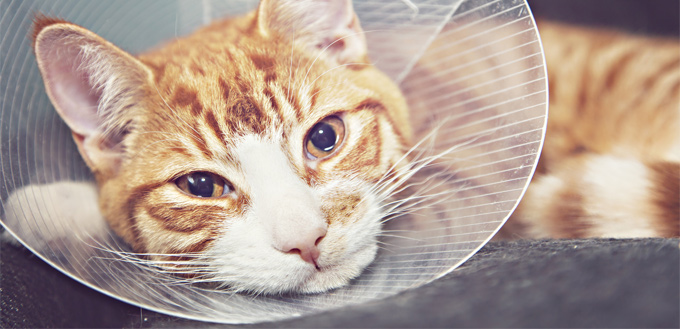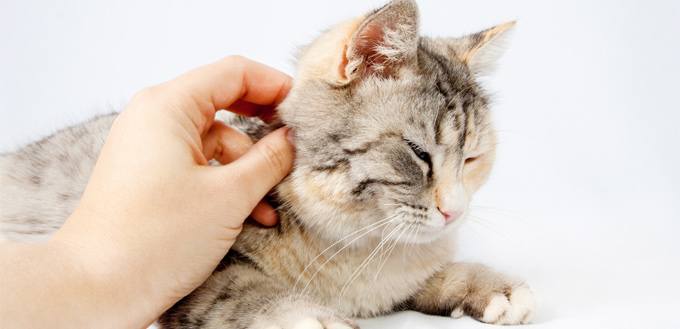Nothing can be scarier than seeing your beloved feline have a bloody nose or has released blood from its nose. And while nosebleed is quite common among humans, it’s not really that common among our furry kitties. Or at least that’s what we think. Nosebleed in cats can indicate a minor problem or a really serious one that requires immediate veterinary attention. It is always best to equip ourselves with the best knowledge possible about such a condition including what to do next so we’ll be better prepared.
Anatomy of a Cat’s Nose
Before we go into the detail about cat nosebleed, it is best to have an understanding of the structure of this part of our kitty’s body. The feline nose is not that different from the nose of other mammals, humans and dogs included. It is composed of a pair of holes called nares or the nostrils into which air enters. These openings connect to passages known collectively as the nasal cavity and terminate at the back of the throat where it is called the nasopharynx. It is this combination of nostrils, nasal passages, and nasopharynx that make up the mammalian nose.

The nostrils contain turbinates or cartilages that serve to warm the air that is inhaled while also removing moisture during exhalation. Within the nasal passages is a mucous membrane. This membrane contains nerves and blood vessels. It also serves as the nose’s first line of defense against foreign bodies and bacteria. The nasal passages also have an outer epithelial lining that is filled with receptors. These receptors pick up a scent from the air and transmitted through the nerves located in the mucous membrane.
There are numerous blood vessels within the nasal passages. These are important since they supply the nutrients and oxygen needed by the various cells found in the nose. Without these blood vessels, the receptors, nasal turbinates, and branches of the olfactory nerve will not be able to function properly.
Unfortunately, any problem within the nasal passages can lead to a rupture of these blood vessels, causing blood to leak out and be interpreted as nosebleed in cats.
Managing Cat Nose Bleed at Home
Feline epistaxis should never be regarded as a minor issue for your cat unless it has already been diagnosed as such by a veterinarian. Your immediate goal is to determine the exact cause of the bleeding. You can only do this by bringing your cat to the vet so that a more comprehensive examination can be performed. However, because it will take some time for you to reach the vet clinic, it is important to apply first aid measures to stop or minimize the bleeding.
Don’t panic. This is the last thing you should ever do when presented with cat nosebleed. Panicking now will not help as you will not be able to think clearly of the all-important steps you need to take to manage cat nosebleed at home.
There’s another reason why you should remain calm throughout the giving of feline first aid. If you are anxious, this can also make your cat really anxious or stressed out. With stress comes an increase in heart rate and blood pressure. This moves the blood a lot faster within the cat’s blood vessels. When this happens the more you will see bleeding from your pet’s nose.
A better approach is to try to calm your kitty down. The more that you can make it feel relaxed the better it will be for you to manage the epistaxis. Unfortunately, this can be quite tricky as you will also need to apply pressure on top of your cat’s muzzle. If your kitty is already acclimatized to having you touch it or cuddling it, then it shouldn’t be any problem. Alternatively, you can apply a cold compress over the same area. Either pressing or applying a cold compress over the nose of your cat can help reduce the amount of blood coming out of its nose. The cold compress is especially effective since it narrows the diameter of the blood vessels. There will still be blood, but at least the flow will be reduced. However, pay attention to how you place the ice pack so that it doesn’t block your cat’s nostrils, lest it will not be able to breathe properly.
Try to wipe off as much blood as you possibly can from your cat’s nostrils. This will also help ensure that your kitty will still be able to breathe.
You should never give any medication or any other ‘treatment’ to your cat unless the vet advised you to do so. If in case you are given instructions by your vet on what you need to do, it is imperative to adhere to these to the letter.
If the bleeding has subsided and there are no observable untoward effects on your cat, there may not be a need to visit the vet. However, if the bleeding persists even after the application of pressure or ice pack, it is best to bring the cat to the vet clinic at once.
You May Also Like: Is Your Cat Sneezing Blood?

Possible Causes of Cat Nose Bleed
Bringing your cat to the vet after an episode of uncontrolled nasal bleeding can help determine the possible cause. This can lay the groundwork for the more appropriate treatment. There are many possible causes of nosebleed in cats. These can include the following.
- Injury
This is one of the most common causes of epistaxis in cats. Any form of injury to the feline nose can almost always lead to bleeding because of the very thin layer of tissue covering the blood vessels inside the nasal mucous membrane. These can get easily ruptured in an accident or even during cat fights. Cats can also inadvertently bump their nose into something hard which can traumatize the delicate nasal tissues.
- Infections
Viruses that cause upper respiratory infections, as well as bacteria that cause Rocky Mountain, Spotted fever and Ehrlichiosis are known to cause to bleeding in the nasal cavity of the cats. Feline immunodeficiency virus and feline leukemia virus infections, as well as certain fungal infections, have also been shown to cause such bleeding.
- Presence of Foreign Object
Cats love to sniff. Some of the otherwise harmless things that they can ‘sniff can potentially get inside their nose and into the nasal passages. As a defense mechanism, the cat will attempt to sneeze. Unfortunately, as the foreign object is expelled from the nasal cavity it can injure the underlying mucous membrane and expose the blood vessels. Repeated sneezing has also been known to prevent the more efficient clotting of blood. This leads to blood gushing out from the blood vessels.
- Blood Disorders
Feline infectious anemia and feline leukemia have been both implicated in the occurrence of feline epistaxis. While these conditions have something to do with the blood’s oxygen-carrying capacity and its ability to ward off infections, other blood components can also be affected which can increase the risk of developing nosebleed. Von Willebrand’s disease, disseminated intravascular coagulation, immune-mediated thrombocytopenia, hemophilia, and bone marrow disease can also cause nasal bleeding in kitties.
- Cancer
Hemangiosarcoma and tumors of the cat’s skull and nasal passages can also produce epistaxis in cats. The presence of tumors within the nasal passages can compress the blood vessels, causing them to rupture. In other cases, the tumor may stimulate an inflammatory reaction whereby the cat scratches its nose and lead to injury of the nasal mucous membrane.
- Poisoning
Rat poison is almost always a cause of epistaxis. Other potentially toxic substances that the cat may have ‘sniffed’ can irritate the already-sensitive mucus membrane of the nasal passages, leading to trauma and bleeding.
- Parasitic Infestation
Frequent nosebleeds are often associated with flea and tick infestation in cats. These parasites can reduce the ability of the cat’s blood to form clots. This leads to uncontrolled bleeding. In very severe cases, this can lead to the demise of the cat.
There are other possible reasons for the nosebleed in cats. It can be because of a problem in the liver or the kidneys or even uncontrolled high blood pressure. Ulcerations in the nasal passages can also cause feline epistaxis. Certain medications like estrogen, methimazole, sulfa class of antibiotics, and even chemotherapeutic drugs have also been implicated in cat nosebleed. Even dental abscesses can produce the classic bleeding from the cat’s nose. Environmental factors, as well as the role of allergens, are also considered as potential culprits.

Diagnosing Feline Epistaxis
Given that there is a multitude of possible causes for a feline nosebleed, your vet will have to perform a comprehensive assessment of your cat to determine the exact cause. A thorough health and medical history will be obtained and can include medications, toxins, allergens, pests, and other substances that the cat may have been exposed to in the days prior to the nosebleed. Any other observations such as coffee-ground-looking stools or vomit or even unusual masses, swelling, or lumps in the cat have to be noted as well.
Once the medical history has been assessed, the cat will be subjected to a thorough physical examination which will generally focus more on the anatomy and function of the cat’s nose as well as related body organs. The nose will be inspected for any anatomical abnormalities which can be sufficient cause for bleeding in the nose. Traumatic injuries have to be carefully evaluated to determine their extent and severity.
To help improve the diagnosis, the vet can order a complete blood count which should establish any blood abnormalities. The biochemistry of the blood can also be evaluated to rule out possible problems with the kidney or liver. Other diagnostic tests that may be ordered can include urinalysis, radiographs, blood clotting tests, fungal cultures, blood pressure determination, and culture and sensitivity testing. Some vets may also want to look inside the nose of the cat through a procedure called rhinoscopy. This will help the vet visualize what is clearly happening inside the cat’s nose.
Treatment for Cat Nose Bleed
The management of nosebleed in cats largely depends on two things: the presence of clinical manifestations other than the bleeding and the actual cause of the bleeding itself.
If the principal cause is due to infection, then the appropriate antimicrobial agent has to be administered to the cat. Depending on the causative organism, the vet can order antibiotics, antiparasitics, or even antifungal medications. It is imperative that the correct dosing recommendation is adhered to so that side effects of these medications can be minimized.
If the cause of the feline epistaxis is trauma, the presence of foreign objects, or even a growing mass within the nasal passages it is often necessary that these be surgically removed. Ruptured blood vessels need to be cauterized to seal it off. Tumors have to be carefully excised while foreign objects will need to be surgically removed as well. Unfortunately, any surgical intervention can carry risks. Your cat will also have to recover for a few days in the hospital.
Intravenous fluid is typically given especially for cats that are too weak. This can also help reestablish fluid and electrolyte balance. If there’s severe anemia, then you can expect the vet to administer a blood transfusion. If the issue is a specific type of blood component, then only that component of blood should be administered. Because blood transfusion is a type of transplant procedure, it is critical that correct cross-matching be observed. The transfusion protocol should also be strictly adhered to.
Other potential treatments can include the administration of anti-anxiety medications just to help reduce the cat’s stress levels and pave the way for a reduction in both heart rate and blood pressure. If the cat has increased blood pressure, an antihypertensive drug can also be given.
Caring for your cat that has bleeding nose requires a methodical approach to its resolution. Remaining calm, keeping your cat relaxed, and trying to stop or minimize the bleeding while preparing to bring your cat to the vet can help manage feline epistaxis.
Sources:
- Nose Bleed in Cats, PetMD
- Krista Williams, BSc, DVM, Nose Bleeds or Epistaxis in Cats, VCA Hospitals
Note: The advice provided in this post is intended for informational purposes and does not constitute medical advice regarding pets. For an accurate diagnosis of your pet's condition, please make an appointment with your vet.






